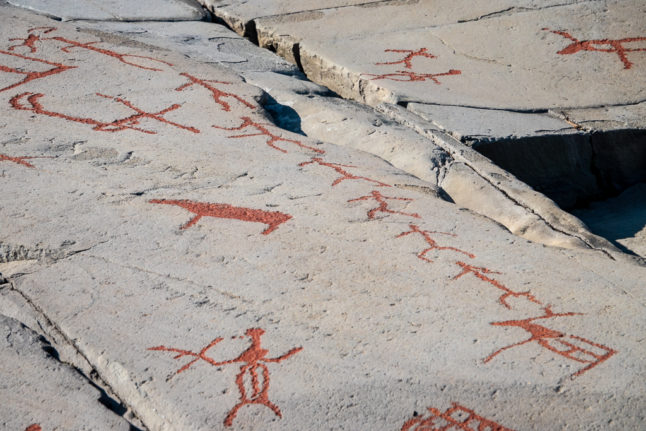WEIRD
Copenhagen’s ‘stinky penis’ flower rises again
Amorphophallus Titanum, also known as Titan’s Penis, is blooming again at the Botanical Gardens of Copenhagen.
Published: 1 June 2016 10:36 CEST

The flower as seen in 2014 – note the young girl plugging her nose to avoid the stench. Photo: Claus Bech/Scanpix
The huge phallic-shaped flower, which is native to the rain forests of Indonesia, can lay dormant for as long as 15 years. But the one in Copenhagen is blooming for the third time in six years, much to the delight of visitors and staff.
Rasmus Kloster, a gardener who takes care of the plant, said in a press release that while no one can say for certain why Copenhagen's ‘penis flower’ is so fond of exposing itself, he thinks the Botanical Garden’s care of the plant may play a role.
“It’s happening because we are incredibly lucky. We have a genetically magnificent specimen and it is cared for to our best abilities. I sometimes give the plant a homemade fertilizer cocktail – the contents of which I don’t want to fully reveal – that most certainly benefits the plant,” he said.
“But genetics play a major role and now that it has bloomed for the third time in six years, we can almost set a clock to it and I won’t be surprised if it blooms again in another two years,” Kloster added.
When the flower bloomed in 2014 it reached a height of 1.91 metres and a diameter of 95cm. Kloster expects it to grow slightly higher this year to top two metres.
The Botanical Gardens have established a pop-up exhibition at its Palmehuset, where visitors can observe the penis flower in its full glory for just 20 kroner (10 kroner for kids). But curious souls be warned: the flower is also known for its death-like stench, which has also earned it the moniker “The Corpse Flower”.
A timelapse video of the flower’s 2014 blooming can be seen here:
Url copied to clipboard!


 Please whitelist us to continue reading.
Please whitelist us to continue reading.
Member comments